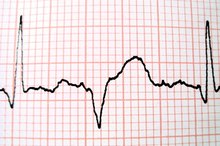Homeostatic Regulation of Blood Pressure
Homeostasis is the ability of the body to maintain an internal environment that is constant, regardless of outside influences. The body controls blood pressure, temperature, respiration and even blood glucose levels by using several internal mechanisms to keep things constant. Blood pressure remains within normal limits through the utilization of both rapid and slow mechanisms. Working together, the mechanisms strive to maintain an approximate blood pressure of 120/80 mm Hg.
Rapid Mechanisms
The baroreceptor reflex is one of the most important fast acting homeostatic mechanisms involved in regulating blood pressure. This consists of receptors, sensory nerves, the medulla oblongata and motor nerves, all working together. Another rapid acting mechanism in the regulation of blood pressure is the secretion of epinephrine and norepinephrine by the adrenal gland.
Barareceptor Reflex
Alternative to Metoprolol Succinate
Learn More
The receptors, called baroreceptors, are found in certain places in the walls of the heart where they are able to sense any change in blood pressure. Sensory nerves are activated after the baroreceptors notice a change. They send information to the medulla oblongata of the brain, where it is interpreted. The medulla then decides whether to increase or decrease blood pressure; depending on what signals it received. The motor nerves of the sympathetic and parasympathetic divisions of the autonomic nervous system are activated to carry out the adjustments needed to maintain blood pressure.
Sympathetic Nervous System
If an increase in blood pressure is necessary, the sympathetic nervous system will go to work. These nerves supply the electrical system of the heart, and will increase the heart rate and cause the heart to contract more forcefully. The sympathetic nervous system also causes some blood vessels to constrict, which increases the resistance of the vessels. Together, these responses increase the amount of blood pumped by the heart each minute, which increases the blood pressure.
Parasympathetic Nervous System
How Do the Walls of the Atria & Ventricles Differ?
Learn More
When a decrease in blood pressure is needed, the medulla oblongata signals the parasympathetic nervous system to cause a decrease in heart rate, which will decrease the blood pressure as well. The parasympathetic nerves also cause blood vessels to dilate, or open, which decreases resistance, again leading to lower blood pressure.
Adrenal Gland Secretions
The adrenal gland secretes the hormones epinephrine and norepinephrine. Both these hormones act to increase the amount of blood pumped by the heart each minute. They also cause the blood vessels to constrict. These actions will assist with increasing blood pressure.
Slow Mechanisms
There are several mechanisms that deal with the long-term control of blood pressure. The renin-angiotensin-aldosterone mechanism is the most important. The kidneys secrete renin into the bloodstream, where it interacts with angiotensin. Angiotensin causes blood vessels to constrict and also causes the secretion of aldosterone. Aldosterone increases the amount of water and sodium absorbed by the kidneys, which leads to an increased amount of salt and water in the bloodstream. This combination of activities causes blood pressure to rise.
Related Articles
References
- The Human Body in Health and Illness; Barbara Herlihy, PhD, RN; 2003
- Body Structures & Functions; Ann Senisi Scott; 2004
- The Physiology Coloring Book; Wynn Kapit; 2000
Writer Bio
Beth Celli is a native New Yorker who is now based in Delaware. She has a varied background in both health care and education, having worked in several different hospitals and medical centers prior to teaching allied health classes. She attended New York University and her writing has appeared on various online publications.







